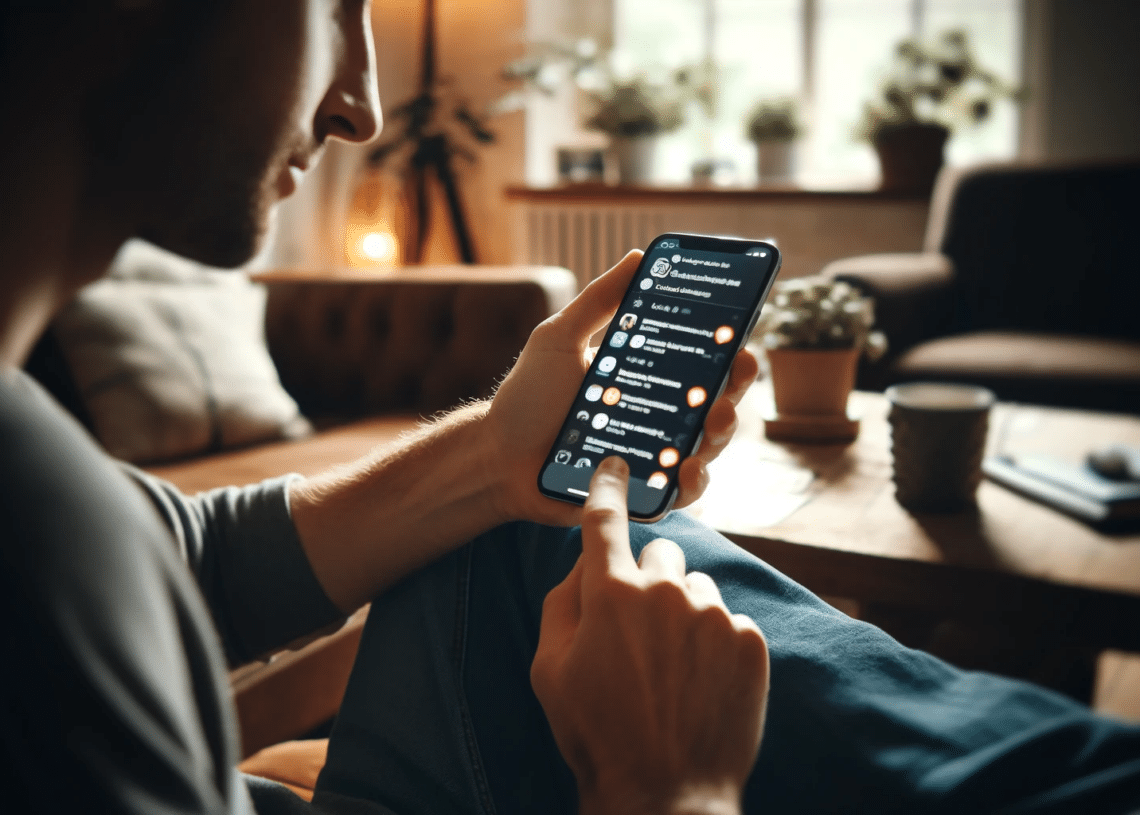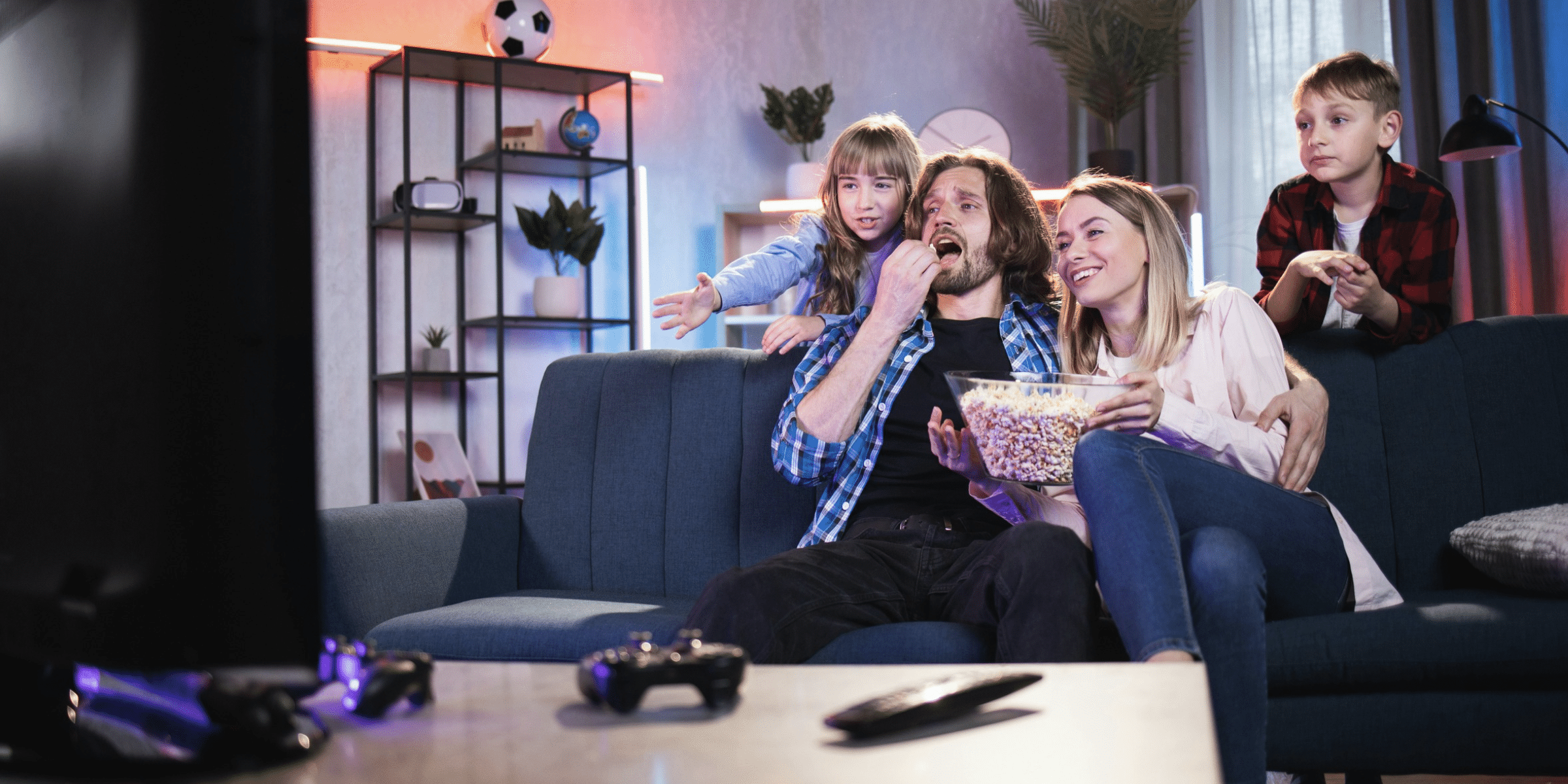Pretty sure this thought came across your mind several times, but it’s hard to imagine life without social media. With just a few clicks or taps, we share our thoughts, photos, and experiences with friends and family across the globe. But are we truly connecting? It seems the more we scroll, the less connected we feel.
Recent studies, published in reputable journals like BMC Psychology and HelpGuide, have revealed a darker side to our digital consumption. While social media platforms promise connection, they might be fostering a sense of loneliness and isolation. It’s a paradox: we’re surrounded by virtual friends, yet we feel increasingly alone.
Let’s dive deeper into this “likes to loneliness” phenomenon. We’ll examine the social and emotional impact of social media on our communication patterns, our self-esteem, and our overall well-being. Together, we’ll uncover what’s happening behind the screens and explore ways to foster genuine connections in our digital age.
Start by asking ourselves, “Is social media truly social?”
Emotional Impact
How does social media use affect our emotional well-being and mental health?
Social media’s impact on our emotional well-being and mental health is a subject of ongoing research and debate. While it offers opportunities for connection and self-expression, it also presents potential risks to our emotional health, particularly when used excessively or without awareness.
- Loneliness & Isolation: Paradoxically, social media can increase feelings of loneliness and isolation. While it provides virtual connection, it may replace genuine face-to-face interactions, leading to a lack of deeper emotional bonds. Additionally, comparing our lives to the carefully curated highlight reels of others can make us feel inadequate and isolated.
- Anxiety & Depression: Studies have linked heavy social media use to increased anxiety and depression. The constant exposure to negative news, cyberbullying, and unrealistic portrayals of life can trigger or worsen these conditions. The pressure to maintain an online persona and the fear of missing out (FOMO) can also contribute to anxiety.
- Fear of Missing Out (FOMO): Social media often showcases exciting events and experiences, leading to FOMO. This fear of missing out can create anxiety and dissatisfaction with one’s own life, as we constantly compare ourselves to others’ seemingly more fulfilling experiences.
- Self-Esteem Issues: The curated and often idealized images presented on social media can negatively impact self-esteem. Constant comparisons to others’ appearance, achievements, and lifestyles can make us feel inadequate and dissatisfied with ourselves. This is particularly true for young people, whose self-image is still developing.
- Addiction: Social media platforms are designed to be engaging and rewarding, with features like likes, comments, and notifications triggering the release of dopamine in our brains. This can lead to addictive behaviors, where individuals spend excessive time on social media, neglecting other aspects of their lives and experiencing withdrawal symptoms when they try to cut back.
It’s important to note that not everyone experiences these negative effects to the same degree. Individual factors like personality, existing mental health conditions, and the way social media is used play a significant role.
Psychological Mechanisms
Social media platforms, while designed to connect people, can sometimes have unintended negative consequences on our mental well-being. This is largely due to the psychological mechanisms they trigger.
- Social Comparison Theory: Social media is a breeding ground for social comparison. We constantly see others’ seemingly perfect lives, curated to showcase their best moments. Upward comparisons, where we compare ourselves to those we perceive as better off, can lead to feelings of inadequacy, envy, and low self-esteem. Even downward comparisons, where we compare ourselves to those we see as worse off, can backfire by making us feel guilty or complacent. The constant cycle of comparison can fuel anxiety and depression.
- Need for Validation & Approval: Social media platforms are built on a system of likes, comments, and shares – external forms of validation. We post content hoping for positive feedback, and the dopamine rush we get when we receive it can become addictive. However, relying on external validation for our self-worth can leave us feeling empty and anxious when the likes and comments dwindle.
- Dopamine & Reward System: The unpredictability of rewards on social media, like getting a notification or going viral, triggers the release of dopamine, a neurotransmitter associated with pleasure and reward. This reinforces our desire to use social media and can lead to addictive behaviors, even when it starts to negatively impact our mental health.
- Social Currency & Self-Worth: On social media, our “social currency” is often measured by our follower count, likes, and shares. We may feel pressure to constantly post engaging content to maintain our perceived social status. This pressure to present a perfect image online can lead to anxiety, depression, and a distorted sense of self-worth.
How does social media contribute to feelings of loneliness, anxiety, or depression, and are there specific platforms or types of content that exacerbate these effects?
Platform and Content-Specific Impacts
Different social media platforms and types of content can have varying impacts on our mental health. Platforms focused on image and appearance, like Instagram, can trigger body image concerns and eating disorders. Platforms with a constant stream of news and opinions, like Twitter, can increase anxiety and negativity. Even seemingly positive content, like travel photos, can evoke FOMO and dissatisfaction with our own lives.
Social Impact
How does social media impact our real-life relationships and communication skills?

Social media’s impact on our real-life relationships and communication skills is a complex issue with both potential benefits and drawbacks. While it has expanded our networks and made communication more convenient, it has also raised concerns about the quality of our interactions and the skills we develop.
Relationships & Communication
- Quality vs. Quantity of Connections: Social media enables us to connect with a vast number of people, but these connections often lack depth and meaning. We may have hundreds of “friends” online, but few close relationships in real life. The focus on accumulating connections can distract us from nurturing existing relationships, leading to a sense of isolation despite being “connected.”
- Superficial Interactions: The nature of social media often encourages superficial interactions. We may engage in brief exchanges, liking posts or leaving comments without truly engaging in meaningful conversations. This can lead to a decline in our ability to have in-depth discussions and connect on a deeper level with others.
- Reduced Face-to-Face Communication: As we spend more time interacting online, we may spend less time engaging in face-to-face communication. This can affect our ability to read nonverbal cues, interpret tone of voice, and develop empathy, all of which are crucial for healthy relationships.
- Online Disinhibition Effect: The anonymity and distance provided by social media can lead to a phenomenon known as the online disinhibition effect. This means that people may say or do things online that they would not do in person, leading to increased conflict, misunderstandings, and potentially harmful behavior.
- Cyberbullying & Online Harassment: The online disinhibition effect can also manifest as cyberbullying and online harassment, which can have severe consequences for victims’ mental health and well-being. This type of behavior can further erode trust and respect in online spaces, making it difficult to build healthy relationships.
Social Skills
- Empathy & Perspective-Taking: Social media can both help and hinder empathy. Reading about others’ experiences and engaging in diverse online communities can expose us to different perspectives and foster empathy. However, the lack of nonverbal cues and the tendency to engage in superficial interactions online can make it harder to truly understand and empathize with others’ feelings.
- Non-Verbal Communication: Social media relies heavily on text-based communication, limiting our exposure to non-verbal cues like facial expressions, body language, and tone of voice. This can make it difficult to accurately interpret others’ emotions and intentions, leading to misunderstandings and miscommunications.
- Conflict Resolution: While social media can be a platform for discussing and resolving conflicts, it can also exacerbate them. The online disinhibition effect can lead to more aggressive and less constructive communication, making it harder to find common ground and reach a resolution. Additionally, the lack of face-to-face interaction can make it harder to address conflicts in a sensitive and empathetic manner.
- Emotional Intelligence: Social media can both help and hinder the development of emotional intelligence. On the one hand, it can expose us to a wide range of emotional expressions and situations, potentially enhancing our ability to recognize and understand emotions in ourselves and others. However, the curated nature of online interactions and the lack of real-time feedback can make it difficult to practice regulating our emotions and responding appropriately to others’ emotional cues.
- Active Listening: The fast-paced and often distracting nature of social media can make it challenging to practice active listening, which involves fully focusing on the speaker, understanding their message, and responding thoughtfully. The constant stream of notifications and the temptation to multitask can hinder our ability to be present in conversations and truly listen to what others have to say.
Are there specific demographic groups (e.g., teenagers, young adults, older adults) that are more vulnerable to the negative effects of social media?
While social media impacts individuals of all ages, research suggests certain demographic groups are more vulnerable to its negative effects. Teenagers and young adults, as well as older adults, face unique challenges in dealing with the negative effects of using social media.
Specific Demographics
Teenagers & Young Adults
This age group is particularly vulnerable due to their developmental stage. Social media plays a significant role in identity formation and self-expression, as they seek validation and connection with peers. However, the constant comparison to others’ carefully curated online personas can lead to feelings of inadequacy, low self-esteem, and body image issues. Cyberbullying and social exclusion are also major concerns, as online interactions can be particularly hurtful and damaging during this sensitive period. The pressure to conform to social norms and the fear of missing out (FOMO) can also contribute to anxiety and depression.
- Identity Formation & Self-Expression: Adolescence and young adulthood are crucial periods for identity development. Social media provides a platform for self-expression and exploration of different identities. However, the constant comparison to carefully curated online personas can lead to feelings of inadequacy and low self-esteem. The pressure to present an idealized version of oneself online can hinder the development of a healthy and authentic self-concept.
- Peer Pressure & Social Norms: Social media can amplify the effects of peer pressure and social norms. Young people may feel pressured to conform to online trends, engage in risky behaviors, or present themselves in ways that align with their peers’ expectations. This can lead to negative consequences, such as engaging in harmful challenges, participating in cyberbullying, or adopting unhealthy lifestyle habits.
- Body Image & Self-Objectification: The prevalence of filtered and edited images on social media can contribute to body dissatisfaction and self-objectification, particularly among young women. Seeing idealized bodies and comparing themselves to unrealistic standards can lead to low self-esteem, eating disorders, and body dysmorphia. The focus on physical appearance can also distract from other important aspects of self-worth and identity.
Cyberbullying & Social Exclusion: Teenagers and young adults are frequent targets of cyberbullying and online harassment. The anonymity and distance of online interactions can embolden bullies and make it easier for them to inflict harm. Cyberbullying can have severe consequences for victims’ mental health and well-being, leading to anxiety, depression, and even suicidal thoughts. Social exclusion, or the feeling of being left out of online groups and conversations, can also contribute to feelings of loneliness and isolation.
Older Adults
Older adults are increasingly using social media, but this demographic is also more vulnerable to its negative effects. Social media can offer numerous benefits, such as staying connected with family and friends, accessing news, and engaging in community activities. However, the negative effects can be significant and harmful.
One primary concern for older adults is the risk of social isolation and loneliness. Social media can exacerbate feelings of loneliness if older adults struggle to engage meaningfully or if online interactions replace face-to-face connections. Limited digital skills can lead to exclusion, as older adults may find it hard to navigate digital spaces effectively. Research indicates that prolonged social isolation can lead to depression, anxiety, and a decline in cognitive function among older adults.
- Digital divide and accessibility issues also play a significant role. Many older adults did not grow up with technology, resulting in a lack of familiarity and comfort with digital platforms. Accessibility issues, such as small text sizes and complex interfaces, further hinder their ability to engage online. This can prevent them from fully participating in social media activities and enjoying its benefits.
- Another significant issue is the susceptibility to misinformation and scams. Older adults are often targeted by fraudsters exploiting their limited digital literacy, making them more susceptible to scams. They may struggle to distinguish between credible sources and false information, leading to the spread of misinformation and potentially harmful decisions. The rapid spread of misinformation on social media platforms can also contribute to increased anxiety and confusion, particularly regarding health-related topics.
- Moreover, social media use can disrupt sleep patterns, a problem that is particularly concerning for older adults. Poor sleep can affect overall health, exacerbating existing health conditions and contributing to a decline in cognitive function. The constant connectivity and the blue light emitted by screens can interfere with the natural sleep cycle, making it harder for older adults to get the rest they need.
Social media does offer opportunities for intergenerational connection, allowing older adults to stay in touch with younger family members and friends, bridging generational gaps. However, the benefits of these connections depend on the older adults’ ability to use these platforms effectively and comfortably. If they struggle with the technology, the potential for meaningful connection can be lost, contributing to feelings of isolation.
What strategies can individuals and society as a whole adopt to mitigate the negative impacts of social media on communication and emotional well-being?
The pervasive nature of social media necessitates a multi-pronged approach to mitigate its negative impacts on communication and emotional well-being. Individuals and society can adopt various strategies to foster healthier online interactions and protect mental health.
Individual Level
- Mindfulness & Self-Awareness: Individuals can cultivate mindfulness by paying close attention to their emotions while using social media. Recognizing when social media triggers negative feelings like envy, inadequacy, or anxiety allows for conscious disengagement and self-regulation.
- Setting Boundaries & Time Limits: Establishing clear boundaries on social media use, such as designated “offline” hours and time limits per app, can prevent excessive consumption and promote healthier habits.
- Curating Content & Unfollowing: Actively choosing to follow accounts that provide positive, uplifting content while unfollowing those that trigger negative emotions empowers individuals to create a more supportive online environment.
- Digital Detox & Breaks: Taking regular breaks from social media, whether for a few hours or a few days, allows for mental rejuvenation and a renewed perspective. Engaging in offline activities during these breaks can further enhance well-being.
- Seeking Support & Therapy: If social media significantly impacts emotional well-being, seeking support from therapists or counselors can provide valuable tools and strategies for coping and building resilience.
Society Level
- Promoting Media Literacy: Educating individuals, especially young people, about media literacy equips them with the critical thinking skills to discern credible information from misinformation and to resist manipulative tactics.
- Encouraging Healthy Online Communities: Fostering online spaces that prioritize respectful communication, empathy, and support can counteract the negativity often prevalent on social media.
- Holding Social Media Platforms Accountable: Advocating for stricter regulations on social media platforms to address issues like cyberbullying, hate speech, and the spread of misinformation can contribute to a safer online environment.
- Research & Public Awareness: Continued research into the effects of social media on mental health and widespread dissemination of findings can raise public awareness and inform policy decisions.
Remember, the key lies in using social media as a tool, not letting it control our lives.
Conclusion
The intricate relationship between social media and our emotional well-being is a double-edged sword. While it offers unprecedented opportunities for connection and self-expression, it also presents significant risks to our mental health, particularly for vulnerable groups like teenagers, young adults, and older adults. By fostering mindfulness and self-awareness, setting clear boundaries, and curating our online experiences, we can harness the positive aspects of social media while mitigating its negative impacts. Simultaneously, society must play a role by promoting media literacy, fostering healthy online communities, holding platforms accountable, and investing in research and public awareness. Ultimately, responsible and mindful use of social media can contribute to a balanced and fulfilling life both online and offline.





